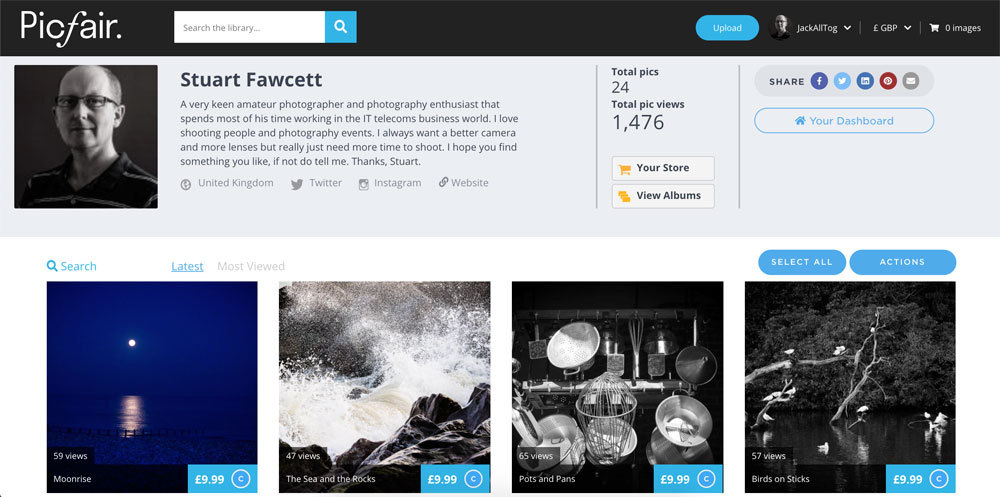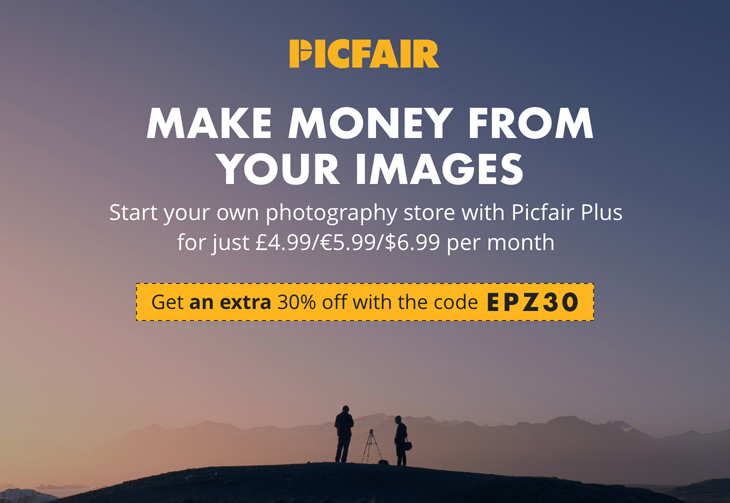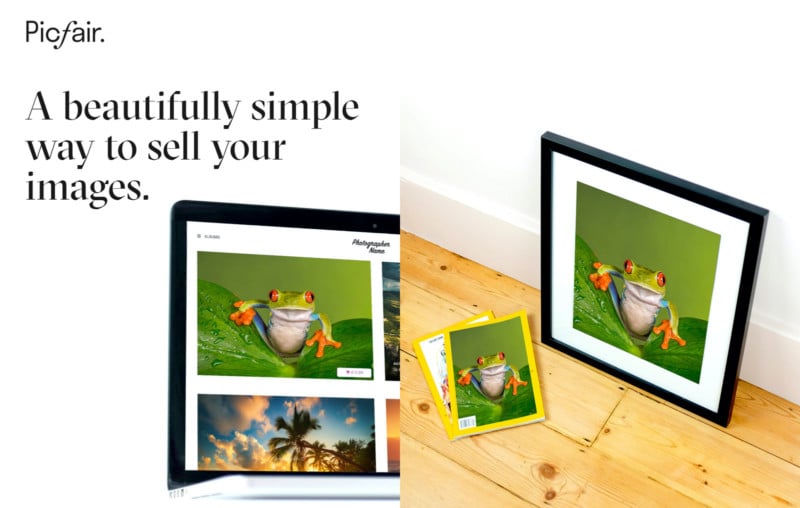In today’s digital world, selling photos online has become a lucrative opportunity for photographers, both amateur and professional. With numerous platforms available, it’s essential to find the right fit to showcase your work and maximize your earnings. Understanding these platforms allows you to leverage your photography skills effectively, connect with potential buyers, and navigate the market efficiently. This guide will explore some of the best Picfair alternatives, helping you choose the platform that best suits your needs.
Overview of Picfair and Its Features

Picfair is a popular online marketplace designed specifically for photographers to sell their images directly to buyers. One of its standout features is that it allows photographers to set their own prices, making it an attractive option for creatives looking to retain control over their work. Picfair also provides a user-friendly interface, enabling easy uploads and management of images.
Additionally, Picfair has a robust licensing model that allows for flexible rights management, including editorial and commercial licenses. This flexibility caters to a vast audience of buyers, from individuals needing images for personal projects to companies looking for commercial use. Picfair‘s built-in marketing tools help photographers promote their portfolios and drive traffic to their listings.
However, despite its advantages, some photographers may seek alternatives that offer different features or better revenue-sharing models. Various platforms emphasize community, diverse pricing structures, and additional services that may be more suited to a photographer’s specific needs. In exploring these alternatives, photographers can find unique marketplaces that align with their styles and business strategies.
Top Alternatives for Selling Photos Online

If you’re looking to make some extra cash by selling your photography online, Picfair is a popular choice, but there are several excellent alternatives that might suit your needs even better. Here are some standout platforms worth considering:
- Shutterstock: A well-known giant in the stock photography market, Shutterstock allows you to reach a vast audience. Contributors earn a percentage based on the number of downloads, and pricing varies depending on the subscription level of the buyer.
- Adobe Stock: If you’re already using Adobe products, this could be a seamless option. With Adobe Stock, you can integrate your images directly into their software, and you earn 33% of each sale. It’s a great place for both photographers and digital artists.
- iStock by Getty Images: A popular hub for high-quality imagery. Though it operates on a more competitive basis, the potential earnings can be significant, especially if you can get your photos featured.
- Dreamstime: Combining a community of photographers and buyers, Dreamstime has an easy-to-use submission process. Plus, they offer a competitive royalty percentage and various pricing models.
- Alamy: Known for their high-quality diverse collection, Alamy pays contributors 50% of the sale price. Their flexibility with pricing makes it appealing for those who want more control over their earnings.
Each of these platforms has its unique features, audience, and payment structures, so consider your specific needs as a photographer when exploring these alternatives.
Comparison of Picfair Alternatives

When evaluating the best alternatives for selling photos online, it’s helpful to compare some key features that can influence your choice. Here’s a quick rundown of how these platforms stack up against each other:
| Platform | Commission Rate | Ease of Use | Audience Reach | Special Features |
|---|---|---|---|---|
| Shutterstock | 15% to 40% | Very User-Friendly | High | Subscription-Based Sales Model |
| Adobe Stock | 33% | Easy Integration with Adobe Software | High | Seamless Adobe Experience |
| iStock | 15% to 45% | Moderate | Very High | Competitive Pricing |
| Dreamstime | 25% to 60% | User-Friendly | Medium | Flexible Pricing Options |
| Alamy | 50% | Moderate | High | High-Quality Diverse Collection |
Take the time to evaluate these aspects based on your photography style, target audience, and how much control you want over pricing and sales. The right platform can make a significant difference in your experience selling photos online!
Factors to Consider When Choosing a Platform
Choosing the right platform to sell your photos can be a daunting task, especially with so many options available. To make an informed decision, consider the following factors:
- Commission Rates: Different platforms have varying commission structures. Some may take a hefty percentage of your sales, while others offer more favorable rates. Always read the fine print to understand how much you’ll actually earn.
- Audience Reach: The platform’s user base is essential. Are they targeting professional photographers, casual users, or specific niches? A platform with a broad audience might increase your chances of sales, but a niche platform can cater to specific photography styles.
- Ease of Use: Navigating the platform should be straightforward. A confusing interface can lead to frustration for both you and potential buyers. Look for platforms that provide an intuitive user experience.
- Licensing Options: Different platforms offer various licensing choices. Make sure to choose one that aligns with how you want your photos to be used, whether it’s for personal, commercial, or editorial purposes.
- Marketing and Promotion: Does the platform help promote your work? Some sites provide marketing tools or have partnerships that can enhance your exposure. This can significantly impact your sales potential.
By considering these factors, you can find a platform that not only resonates with your artistic vision but also supports your business goals.
How to Maximize Sales on Photo Selling Platforms
Once you’ve chosen the right platform for your photography sales, it’s time to focus on maximizing your sales potential. Here are some effective strategies to consider:
- High-Quality Images: Always upload the highest quality images possible. Crisp, clear visuals are more appealing to buyers and significantly enhance your chances of making a sale.
- Keyword Optimization: Use relevant keywords and tags for your photos. This helps your images appear in search results, making them easier for potential customers to find.
- Diverse Portfolio: Showcase a variety of styles and subjects. The more diverse your portfolio, the more likely you are to attract a broader audience. Don’t limit yourself to one genre; explore landscapes, portraits, wildlife, and abstract imagery.
- Engage with Your Audience: Use social media to connect with your audience. Share your work, behind-the-scenes processes, and engage with your followers. Building a loyal community can lead to more sales.
- Regularly Update Your Portfolio: Keep your portfolio fresh by uploading new images regularly. This not only keeps your existing audience engaged but also signals to potential buyers that you’re active and continuously creating.
By implementing these strategies, you can effectively enhance your visibility and boost your sales on photo selling platforms. Remember, persistence is key in the world of online photography sales!
Success Stories of Photographers Using Alternatives
Many photographers looking to sell their work online have found great success using platforms other than Picfair. Here are a few inspiring success stories that illustrate how these alternatives can help photographers thrive:
Amy, the Nature Photographer: Amy, a passionate landscape photographer, chose to sell her photos through SmugMug. With its tailored features for photographers and great customization options, she was able to create a stunning portfolio that showcased her work beautifully. Within a year, she had sold multiple prints for outdoor publications and even secured partnerships with local tourism boards.
Mark, the Travel Enthusiast: Mark found his niche by selling images on 500px. He began sharing his unique travel experiences and stunning photography, which quickly garnered attention. Through 500px’s licensing options, he sold stunning images to several travel blogs and magazines, turning his passion into a lucrative side hustle.
Samantha, the Wedding Photographer: After years of building her business, Samantha turned to EyeEm to expand her reach. Utilizing EyeEm’s marketplace, she quickly sold several images from weddings and events to brands looking for authentic content. Not only did her income grow, but she also gained invaluable exposure that led to more bookings.
These stories show that while Picfair is a great option, many photographers have discovered success by leveraging alternative platforms. By finding the right fit for their style and audience, they transformed their passion for photography into a credible source of income. Whether you’re just starting or looking to enhance your existing portfolio, these alternatives provide robust opportunities to share your work with the world.
Conclusion and Recommendations
As we’ve explored, there are numerous alternatives to Picfair that cater to different needs and styles of photographers. When it comes to selling photos online, the best platform for you will ultimately depend on your goals, preferences, and the specific audience you want to reach. Here are a few recommendations based on your situation:
- For Beginners: If you’re just starting out, consider platforms like Flickr or 500px to build your portfolio and gain exposure.
- For Pro-Level Exposure: If you’re a professional seeking higher sales, try Adobe Stock or Getty Images, which offer extensive reach and a more discerning clientele.
- For Specialty Niches: Platforms like SmugMug or Fine Art America are ideal for photographers focusing on specific genres, thanks to their tailored marketing features.
- For Full Control: If retaining control over sales and client relationships is crucial, consider setting up your own website with Squarespace or Shopify.
Remember, success in selling photos online is not just about the platform; it’s also about how well you engage with your audience, promote your work, and understand the market. Don’t hesitate to try multiple platforms to see what works best for you—the right choice can lead to incredible opportunities! Happy selling!


